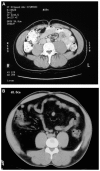Lipodystrophy in HIV patients: its challenges and management approaches
- PMID: 22267946
- PMCID: PMC3257972
- DOI: 10.2147/HIV.S14562
Lipodystrophy in HIV patients: its challenges and management approaches
Abstract
HIV-associated lipodystrophy is a term used to describe a constellation of body composition (lipoatrophy and lipohypertrophy) and metabolic (dyslipidemia and insulin resistance) alterations that accompany highly active antiretroviral therapy. These changes, which resemble metabolic syndrome, have been associated with a variety of adverse outcomes including accelerated cardiovascular disease. The body composition and metabolic changes appear to cluster in HIV infection, although they are distinct alterations and do not necessarily coexist. Epidemiological studies have demonstrated multiple pathogenic influences associated with host, disease, and treatment-related factors. The adverse treatment effects were more prominent in early regimens; continued drug development has led to the application of metabolically safer regimens with equal or greater potency than the regimens being replaced. Disease-related factors include HIV infection as well as inflammation, immune activation, and immune depletion. The body composition changes promote anxiety and depression in patients and may affect treatment adherence. Treatment of dyslipidemia and alterations in glucose metabolism is the same as in non-HIV-infected individuals. Lipoatrophy is managed by strategic choice of antivirals or by antiviral switching, and in some cases by plastic/reconstructive surgery. Lipohypertrophy has been managed mainly by lifestyle modification, ie, a hypocaloric diet and increased exercise. A growth hormone releasing factor, which reduces central fat, has recently become available for clinical use.
Keywords: body composition; dyslipidemia; insulin resistance; lipoatrophy; lipohypertrophy.
Figures


Similar articles
-
Morphological and metabolic components of lipodystrophy in various nevirapine-based highly active antiretroviral therapy (HAART) regimens: a cross-sectional, observational study.Clin Drug Investig. 2011 Nov 1;31(11):759-67. doi: 10.1007/BF03256916. Clin Drug Investig. 2011. PMID: 21919542
-
HIV-associated lipodystrophy: a review from a Brazilian perspective.Ther Clin Risk Manag. 2014 Jul 17;10:559-66. doi: 10.2147/TCRM.S35075. eCollection 2014. Ther Clin Risk Manag. 2014. PMID: 25083134 Free PMC article. Review.
-
Growth hormone and tesamorelin in the management of HIV-associated lipodystrophy.HIV AIDS (Auckl). 2011;3:69-79. doi: 10.2147/HIV.S14561. Epub 2011 Jul 10. HIV AIDS (Auckl). 2011. PMID: 22096409 Free PMC article.
-
[Lipodystrophy syndrome in HIV-infected patients. Clinical and diagnostic features].Rev Med Chir Soc Med Nat Iasi. 2006 Jul-Sep;110(3):521-5. Rev Med Chir Soc Med Nat Iasi. 2006. PMID: 17571539 Review. Romanian.
-
HIV-Associated Lipodystrophy.2022 Nov 7. In: StatPearls [Internet]. Treasure Island (FL): StatPearls Publishing; 2025 Jan–. 2022 Nov 7. In: StatPearls [Internet]. Treasure Island (FL): StatPearls Publishing; 2025 Jan–. PMID: 29630235 Free Books & Documents.
Cited by
-
Aerobic capacity and health-related quality of life in adults HIV-infected patients with and without lipodystrophy.Braz J Infect Dis. 2016 Jan-Feb;20(1):76-80. doi: 10.1016/j.bjid.2015.11.001. Epub 2015 Dec 18. Braz J Infect Dis. 2016. PMID: 26707972 Free PMC article.
-
Excisional lipectomy versus liposuction in HIV-associated lipodystrophy.Arch Plast Surg. 2021 Nov;48(6):685-690. doi: 10.5999/aps.2020.02285. Epub 2021 Nov 15. Arch Plast Surg. 2021. PMID: 34818717 Free PMC article.
-
Perspectives of adults living with HIV attending the opportunistic infections clinic at Chitungwiza central hospital in Zimbabwe towards physical activity: a cross-sectional survey.BMC Sports Sci Med Rehabil. 2023 May 1;15(1):69. doi: 10.1186/s13102-023-00676-6. BMC Sports Sci Med Rehabil. 2023. PMID: 37127685 Free PMC article.
-
Coronary artery disease in patients with human immunodeficiency virus infection.J Nucl Cardiol. 2021 Apr;28(2):510-530. doi: 10.1007/s12350-020-02280-4. Epub 2020 Aug 20. J Nucl Cardiol. 2021. PMID: 32820424 Review.
-
Lipodystrophy HIV-related and FGF21: A new marker to follow the progression of lipodystrophy?J Transl Int Med. 2016 Dec 1;4(4):150-154. doi: 10.1515/jtim-2016-0026. Epub 2016 Dec 30. J Transl Int Med. 2016. PMID: 28191538 Free PMC article.
References
-
- Garg A. Acquired and inherited lipodystrophies. N Engl J Med. 2004;350:1220–1234. - PubMed
-
- Safrin S, Grunfeld C. Fat distribution and metabolic changes in patients with HIV infection. AIDS. 1999;13:2493–2505. - PubMed
-
- Palella FJ, Baker RK, Moorman AC, et al. Mortality in the highly active antiretroviral therapy era: changing causes of death and disease in the HIV outpatient study. J Acquir Immune Defic Syndr. 1998;43:27–34. - PubMed
-
- Carr A, Samaras K, Burton S, et al. A syndrome of peripheral lipodystrophy, hyperlipidemia and insulin resistance in patients receiving protease inhibitors. AIDS. 1998;12:F51–F58. - PubMed
-
- Podzamczer D, Ferrer E, Martínez E, et al. How much fat loss is needed for lipoatrophy to become clinically evident. AIDS Res Hum Retroviruses. 2009;25:563–567. - PubMed
LinkOut - more resources
Full Text Sources

